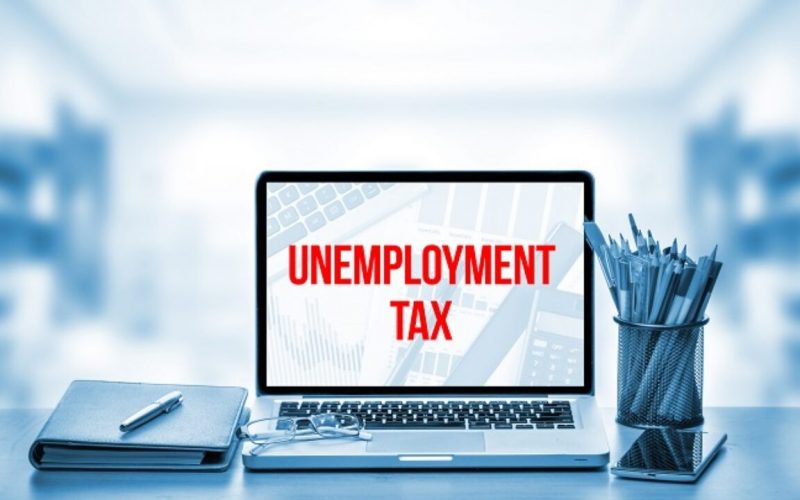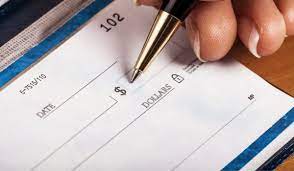After paying too much tax on unemployment benefits received last year, millions of Americans are still waiting for refunds. Many people who claim unemployment benefits were suddenly due refunds as a result of adjustments made as part of Joe Biden’s American Rescue Plan. However, these tax returns are taking a long time to arrive. Simply put, there is a significant lag. The first refund payment was made in late May, and more payments have been made throughout the summer. Despite this, some people have yet to receive a penny or any indication that a refund is on the way. To further bring clarity to this, we have designed this article to answer questions pertaining to unemployment tax funds, compensation, refund, and all you need to know.
What Is the Unemployment tax fund?
In a word, if you received an unemployment task fund in 2021 and paid taxes on it, you’ll receive a portion or all of your taxes returned either by direct deposit or the mail.
On March 11, Congress enacted the American Rescue Plan Act of 2021, which President Joe Biden signed into law. Taxes on up to $10,200 in the unemployment tax fund would be eliminated for workers earning less than $150,000 per year, according to one of the plan’s provisions.
The IRS has already distributed nearly $10 billion in refunds to 8.7 million taxpayers, but another 1.5 million will receive returns in August. Throughout the year, more taxpayers will receive money.
The amount you will receive is determined by the amount of taxes you paid on your unemployment tax fund income in 2020. The average refund, according to the IRS, is $1,686.
Overview
To begin, taxpayers who received unemployment tax fund benefits last year and paid taxes on that money before the provision in the American Rescue Plan Act of 2021 would be eligible for refunds. The tax relief is for those with an adjusted gross income of less than $150,000, as well as those who received unemployment assistance in 2020. Unemployment benefits received this calendar year will be taxed on 2023 tax returns at this time.
The $10,200 tax cut for single filers is the amount of the income exclusion, not the refund (taxpayers who are married and filing jointly may be eligible for a $20,400 tax break). The refund amount varies by person, depending on overall income, tax bracket, and the number of earnings from unemployment benefits. The refunds have totaled more than $1,600 so far.
Not everyone, however, will be eligible for a return. The IRS has the authority to seize a return in order to pay a past-due debt, such as unpaid federal or state taxes or child support. Wait for the letter that the IRS sends to taxpayers whose returns have been amended to see if a refund has been granted. These letters are sent within 30 days of the adjustment. This will tell you whether the adjustment results in a refund.
If the IRS continues to issue refunds if you supplied bank account information on your 2020 tax return. They will be sent via direct deposit. IRS TREAS 310 TAX REF is a common name for a direct deposit amount. Otherwise, the refund will be mailed as a paper check to the IRS’s current mailing address.
Nine things you need to know about the tax refund
The IRS says it started sending unemployment tax refunds to taxpayers who treated their benefit payments as income starting earlier this month.
Here’s what you can expect.
- The tax break is for those who earned less than $150,000 in adjusted gross income.
- Refunds started going out the week of May 10 according to the IRS and will run through the summer. As the agency evaluates tax returns. More complicated returns could take longer to process.
- If the IRS determines you are a refund on the unemployment tax fund break, it will automatically send a check.
- You do not need to file an amended return to claim the exemption.
- Refunds will go out as a direct deposit if you provided bank account information on your 2020 tax return. Otherwise, the refund will be mailed as a paper check to the address the IRS has on hand.
- The IRS is doing the recalculations in two phases, starting with those who are eligible for the up to $10,200 tax break. It will then adjust returns for those married-filing-jointly taxpayers who are eligible for the up to $20,400 tax break.
- The IRS will send you a notice explaining the corrections within 30 days of when a correction is made.
- You won’t be able to track the progress of your refund through the IRS Get My Payment tracker, the Where’s My Refund tool, the Amended Return Status tool, or another IRS portal.
- The IRS can seize the refund to cover a past-due debt, such as unpaid federal or state taxes and child support.
IRS schedule for unemployment tax refunds
The IRS has already sent more than 8.7 million unemployment compensation refunds totaling more than $10 billion. The most recent wave of payouts came in July. beginning with single taxpayers without dependents and progressing to married couples filing jointly. Early this summer, the first batch of these extra refunds was distributed to individuals with the simplest returns. Also, batches are expected to continue for more sophisticated returns, which may take longer to process.
Some taxpayers who filed as head of household or married with dependents began receiving IRS money. In July or receive updates on their transcript with dates in August and September.
How to track your refund and check your tax transcript
The first way to get clues about your refund is to try the IRS online tracker applications: The Where’s My Refund tool can be accessed. If you filed an amended return, you can check the Amended Return Status tool.
If those tools don’t provide information on the status of your unemployment tax refund. Another way to see if the IRS processed your refund (and for how much) is by viewing your tax records online. You can also request a copy of your transcript by mail.
Here’s how to check your tax transcript online:
- Visit IRS.gov and log in to your account. If you haven’t opened an account with the IRS. This will take some time as you’ll have to take multiple steps to confirm your identity.
- Once logged in to your account, you’ll see the Account Home page. Click View Tax Records.
- On the next page, click the Get Transcript button.
- Here you’ll see a drop-down menu asking the reason you need a transcript. Select Federal Tax and leave the Customer File Number field empty. Click the Go button.
- The following page will show a Return Transcript, Records of Account Transcript, Account Transcript, and Wage & Income Transcript for the last four years. You’ll want the 2020 Account Transcript.
- This will open a PDF of your transcript: Focus on the Transactions section. What you’re looking for is an entry list of Refund issues. Also, it should have a date in late May or June.
How to call the IRS if you’re waiting on a refund
It’s advisable to look for your tax transcript or use the Where’s My Return tool to search for your refund (mentioned above). If you mailed a paper tax return or had to answer the IRS about your electronically filed tax return, you can expect a delay, according to the IRS. The IRS makes it clear that a second return is not necessary.
In addition, the IRS advises against calling since it only offers limited live assistance. The IRS is dealing with a backlog of tax returns, delayed stimulus checks, and child tax credit payments. You can still try, even if your chances of speaking with someone are minimal. The ideal phone number to call is 1-800-829-1040.
Is the IRS Forgiving 10000 Unemployment?
People who were eligible for unemployment compensation in 2020 and received it in 2021 are eligible for relief under the American Rescue Plan Act of 2021. If the recipient’s modified adjusted gross income (AGI) is less than $150,000, up to $10,200 of their unemployment compensation will be disregarded when calculating their total taxable income.
Refunds for Unemployment Compensation
If you are due a refund, the IRS will deposit it directly into your bank account if you supplied your bank account information on your 2020 tax return. The IRS will mail a paper check to your record address if acceptable bank account information is not available. If your account is no longer active or closed. Your refund will be returned to the IRS, and a check will be sent to the address on file with the IRS.) The IRS says it will keep sending refunds until all of the tax returns have been examined. If there are any corrections, the IRS will issue you a notice.
Keep any notices you get for your records, and double-check your return after receiving an IRS notice. Normal offset rules apply to the refunds as well. If you owe federal tax, state income tax, state unemployment compensation debt, child support, spousal support, or certain federal non-tax debt, the amount you get maybe (perhaps to zero) (i.e., student loans).
How is FUTA Calculated in 2022?
The FUTA tax rate is currently set at 6% of gross income. The tax is applied to the first $7,000 in wages that were paid to each employee by the employer throughout the course of the year. The pay basis for the federal government, often known as FUTA, is commonly set at $7,000. The minimum pay in your state may be different from the minimum wage in other states according to the rules in each state.
Who is Subject to FUTA Tax?
Who Is Required to Make FUTA Tax Payments? If a company has paid $1,500 or more in compensation to an employee during any calendar quarter, then that employer is required to pay FUTA tax on the first $7,000 in wages that the employee receives annually. However, starting at this point and going forward, you won’t be subject to taxation.
Who is Exempt from FUTA?
Only money from an organization’s own funds can be used to pay FUTA tax. Employees are exempt from paying this tax and will not have it taken out of their paychecks. A corporation that satisfies the requirements of Internal Revenue Code section 501(c)(3) to be free from income tax is also exempt from the Federal Unemployment Tax Act (FUTA).
Conclusion
The Internal Revenue Service (IRS) publishes certain tax and unemployment compensation information on its website. However, we don’t know when payments will be, and which banks will receive direct deposits first. Or who to contact at the IRS if there’s a problem with your refund.
The unemployment exemption is implemented in certain states, but not all, for state income tax returns in 2020. Because some people receive full tax-free unemployment benefits while others do not. You may need to do some research to determine whether the unemployment tax cut will apply to your state income taxes. Along with this state-by-state breakdown from Kiplinger, this chart from tax preparation provider H&R Block could provide some insight.
FAQ
How do I know if I get unemployment tax refund?
You can try the IRS online tracker applications, aka the Where’s My Refund tool and the Amended Return Status tool, but they may not provide information on the status of your unemployment tax refund. An immediate way to see if the IRS processed your refund (and for how much) is by viewing your tax records online.
Are unemployment benefits taxable?
Yes. Unemployment insurance benefits are subject to both federal and state taxes. The American Rescue Plan Act of 2021 (which most people call the stimulus bill) exempted some of that money from federal income taxes for the tax year 2020.
Does unemployment count as income for SNAP?
If you and your household have monthly gross income (income before taxes) below 185% of the Federal Poverty Level, you should apply for SNAP. While most Unemployment benefits count as income, the extra $300/week you receive does NOT count as income for SNAP.






